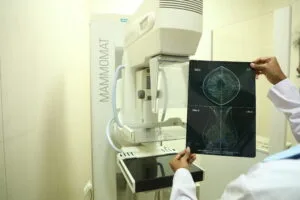Biofire FilmArray Panel Test to detect pathogens

The Biofire FilmArray Panels perform multiplex testing to detect pathogens on specifically mentioned samples:
| Panel | Sample Type | Container | Transportation Temperature | Turnaround Time |
| BioFire Blood Culture Identification 2 (BCID2) FilmArray Panel | Blood, pus or body fluid | Blood culture bottle (paired) | Room temperature | 4 hours (post blood culture flagging positive) |
| Gastrointestinal FilmArray Panel | Stool | Cary Blair transport medium/ sterile container | 2°C – 8 °C (if transported in Cary Blair medium) Frozen (if Cary Blair medium is not available) | 4 hours |
| Respiratory 2.1 FilmArray Panel | Nasopharyngeal swab | 3ml of viral transport media (VTM) / saline | At room temperature for up to 4 hours (15°C – 25 °C) Refrigerated for up to 3 days (2°C – 8 °C) | 4 hours |
| Pneumonia Plus FilmArray Panel | Bronchoalveolar lavage (BAL) sputum (induced and expectorated) endotracheal aspirate (ETA) | Sterile container | Refrigerated for up to 1 day (2°C – 8°C) | 4 hours |
| Meningitis/Encephalitis (ME) FilmArray Panel | CSF | Sterile container | CSF in frozen condition or transported on ice within 24-30 hrs | 4 hours |
Quality Control: In built extraction & PCR control in the lyophilized form in the pouches ensures the quality check at critical steps of extraction & PCR for sample inhibitory effect.
Result terminology:
- Detected:
When the result is shown as detected for a specific pathogen/ resistance gene, it means:- Controls were successfully passed, AND
- The specific genetic material for the pathogen/ resistance gene was detected.
- Not Detected:
When the result is shown as not detected for a specific pathogen/ resistance gene, it means:- Controls were successfully passed, AND
- The specific genetic material for the pathogen/ resistance gene was not detected.
Interpretation of antimicrobial resistance genes in the pneumonia and BCID2 Biofire panels:
| Antimicrobial resistance gene | Interpretation |
| CTX-M | Production of extended-spectrum β-lactamase (ESBL)(1) Resistance to a wide range of commonly used β-lactam antibiotics including third generation cephalosporins (cefotaxime and ceftriaxone, but not generally against ceftazidime) |
| IMP | Carbapenemase production(2) Resistance to carbapenems |
| KPC | Carbapenemase production(3) Resistance to carbapenems |
| MCR-1 | Colistin resistance(4) |
| MecA / MecC, MREJ | Presence of MRSA(5) |
| NDM | Carbapenemase production(3) Resistance to carbapenems |
| OXA-48 | Carbapenemase production(3) Resistance to carbapenems |
| VanA/B | Vancomycin resistance(6) |
| VIM | Carbapenemase production(3) Resistance to carbapenems |
References:
- Rossolini GM, D’Andrea MM, Mugnaioli C. The spread of CTX-M-type extended-spectrum β-lactamases. Clin Microbiol Infect. 2008 Jan;14:33–41.
- Lowe CF, Matic N, Champagne S, Romney MG, Leung V, Ritchie G. The Brief Case: IMP, the Uncommonly Common Carbapenemase. Burnham C-AD, editor. J Clin Microbiol [Internet]. 2020 Mar 25 [cited 2021 Dec 21];58(4). Available from: https://journals.asm.org/doi/10.1128/JCM.01094-19
- Han R, Shi Q, Wu S, Yin D, Peng M, Dong D, et al. Dissemination of Carbapenemases (KPC, NDM, OXA-48, IMP, and VIM) Among Carbapenem-Resistant Enterobacteriaceae Isolated From Adult and Children Patients in China. Front Cell Infect Microbiol. 2020 Jul 3;10:314.
- Li B, Yin F, Zhao X, Guo Y, Wang W, Wang P, et al. Colistin Resistance Gene mcr-1 Mediates Cell Permeability and Resistance to Hydrophobic Antibiotics. Front Microbiol. 2020 Jan 10;10:3015.
- Becker K, Denis O, Roisin S, Mellmann A, Idelevich EA, Knaack D, et al. Detection of mecA and mecC Positive Methicillin-Resistant Staphylococcus aureus (MRSA) Isolates by the New Xpert MRSA Gen 3 PCR Assay. Burnham C-AD, editor. J Clin Microbiol. 2016 Jan;54(1):180–4.
- Phukan C, Lahkar M, Ranotkar S, Saikia K. Emergence of vanA gene among vancomycin-resistant enterococci in a tertiary care hospital of North – East India. Indian J Med Res. 2016;143(3):357.



